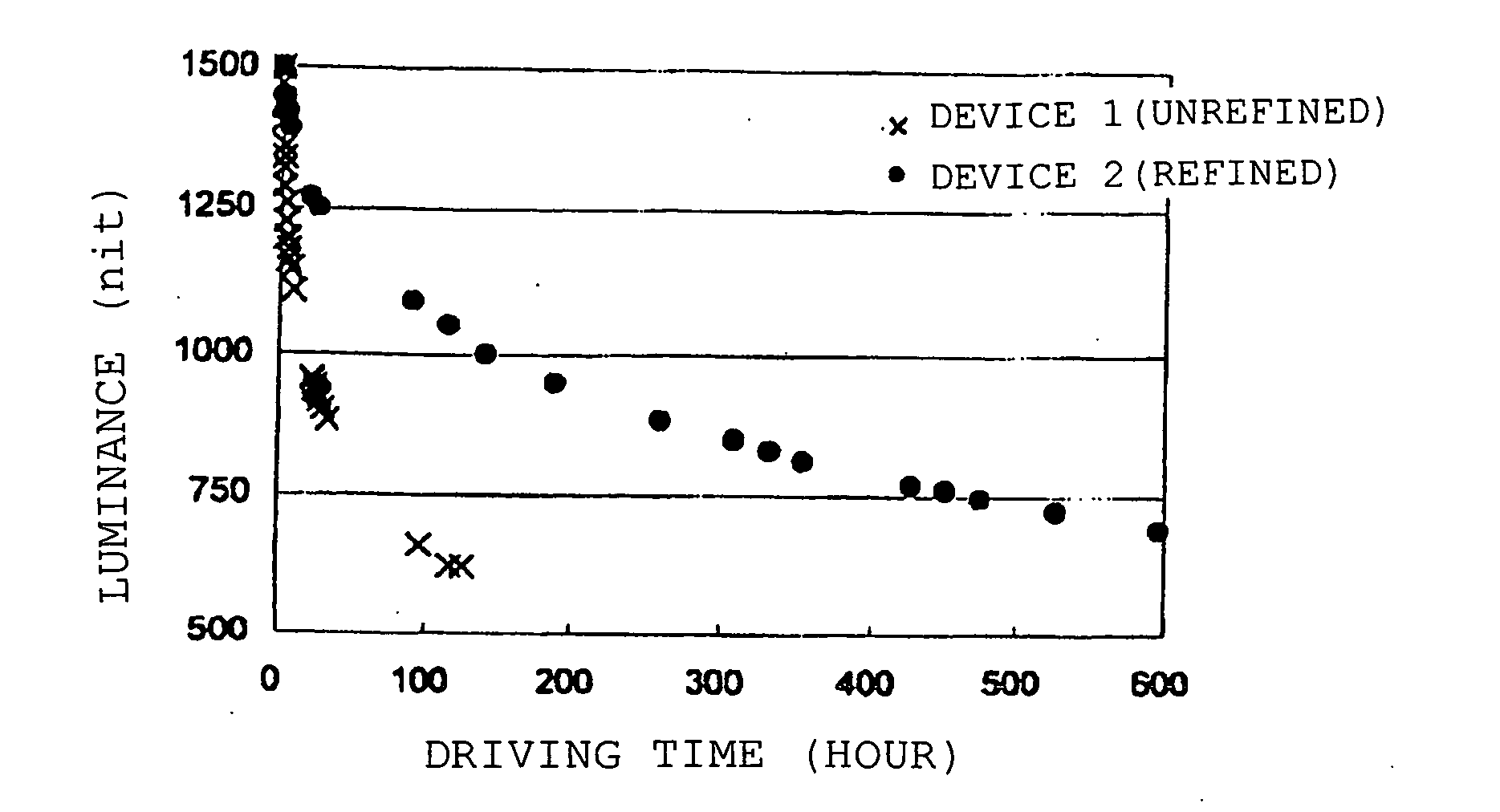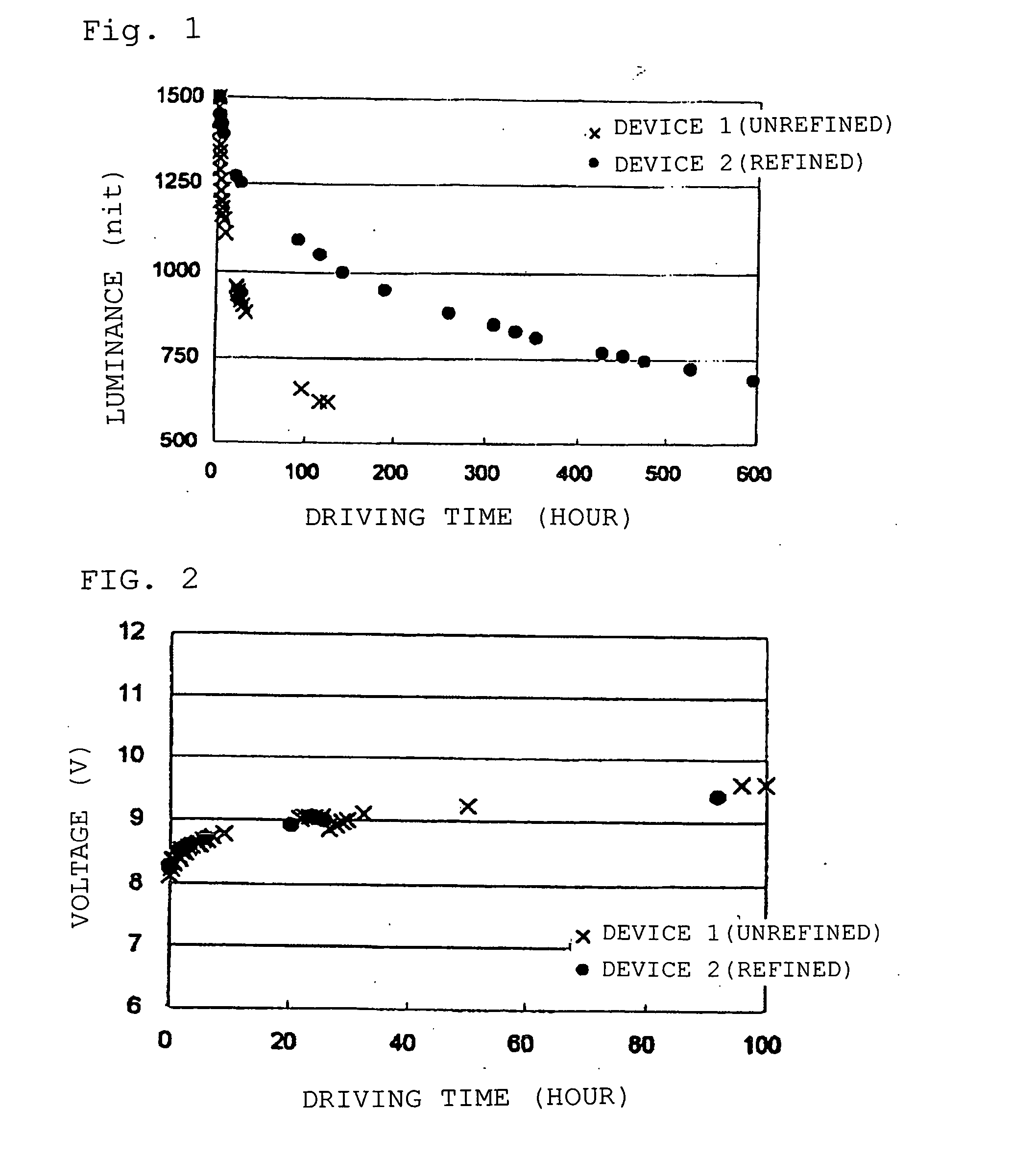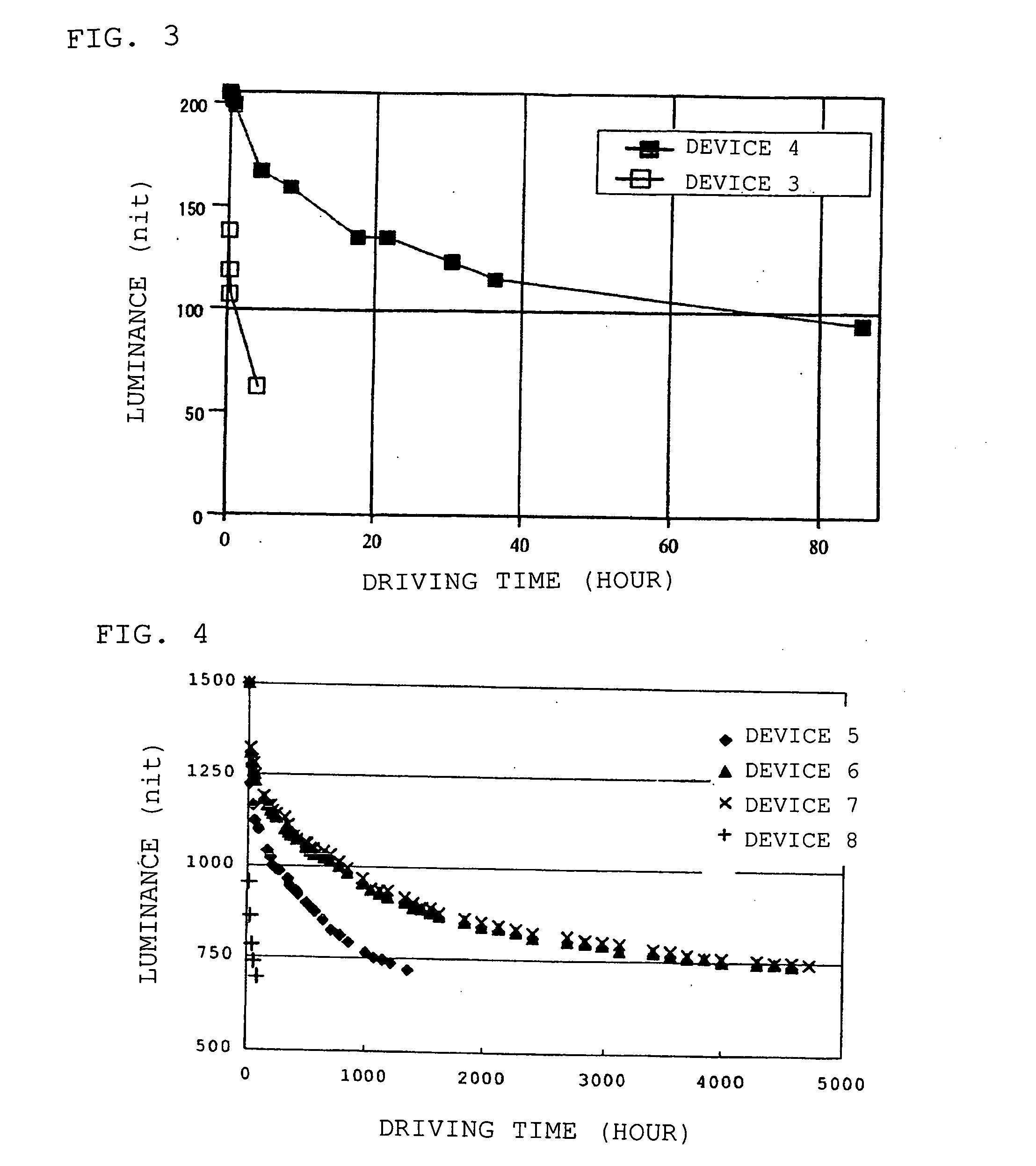Organic electroluminescent device
a technology of electroluminescent devices and organic el, which is applied in the direction of discharge tube luminescnet screens, natural mineral layered products, transportation and packaging, etc., can solve the problems of inability to quantitatively prove the effect of impurities in a practical phosphorescent organic el device, and the structure and properties of the effect of the organic el device not yet shown clearly, etc., to achieve high emission luminance and high luminous efficiency
- Summary
- Abstract
- Description
- Claims
- Application Information
AI Technical Summary
Benefits of technology
Problems solved by technology
Method used
Image
Examples
example 1
and the Comparative example 1
[0129] A luminescent material 1 (hereinafter referred to as the [Host 1]) was synthesized according to a synthetic scheme shown below:
[0130] The compound [Host 1] was synthesized in the following manner.
Synthesis of Synthetic Intermediate (1)
[0131] Dissolved in 200 ml of methanol were 18.0 g (68 mmol) of 3,5-dibromobenzaldehyde and 9.0 g (75 mmol) of acetophenone, and 70 ml (70 mmol) of a 1M sodium hydroxide aqueous solution was dropwise added thereto, followed by stirring the solution at room temperature for 30 minutes. After finishing the reaction, crystal deposited was filtered and washed with methanol to obtain 20.4 g (yield: 82%) of a synthetic intermediate (1).
Synthesis of Synthetic Intermediate (2)
[0132] Suspended in 70 ml of ethanol were 10.0 g (27 mmol) of the synthetic intermediate (1) and 4.4 g (28 mmol) of benzamidine hydrochloride, and 3.3 g (60 mmol) of sodium hydroxide was added thereto, followed by heating and refluxing the soluti...
example 2
and the Comparative Example 2
[0151] A luminescent material 2 (hereinafter referred to as the [Host 2]) was synthesized according to a synthetic scheme shown below:
[0152] The compound [Host 2] was synthesized in the following manner.
Synthesis of Synthetic Intermediate (3)
[0153] Suspended in 50 ml of 1,4-dioxane were 5.0 g (16 mmol) of 1,3,5-tribromobenzene, 5.3 g (31 mmol) of 1,2,3,4-tetrahydrocarbazole, 0.3 g (0.4 mmol) of copper iodide and 13.8 g (65 mmol) of potassium phosphate, and 1.9 ml (16 mmol) of trans-1,2-cyclohexanediamine was added thereto. The mixture was heated and refluxed for 26 hours under argon atmosphere. The reaction solution was cooled down to room temperature, and methylene chloride and water were added thereto to separate the solution into two layers. Then, the organic layer separated was washed with water and dried on anhydrous sodium sulfate. After distilling the organic solvent off under reduced pressure, the residue was refined by silica gel chromatogr...
PUM
| Property | Measurement | Unit |
|---|---|---|
| pressure | aaaaa | aaaaa |
| triplet energy gap | aaaaa | aaaaa |
| triplet energy gap | aaaaa | aaaaa |
Abstract
Description
Claims
Application Information
 Login to View More
Login to View More - R&D
- Intellectual Property
- Life Sciences
- Materials
- Tech Scout
- Unparalleled Data Quality
- Higher Quality Content
- 60% Fewer Hallucinations
Browse by: Latest US Patents, China's latest patents, Technical Efficacy Thesaurus, Application Domain, Technology Topic, Popular Technical Reports.
© 2025 PatSnap. All rights reserved.Legal|Privacy policy|Modern Slavery Act Transparency Statement|Sitemap|About US| Contact US: help@patsnap.com



